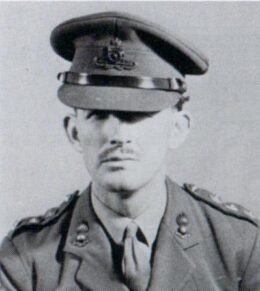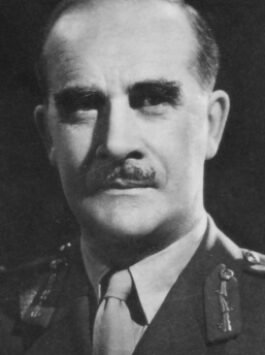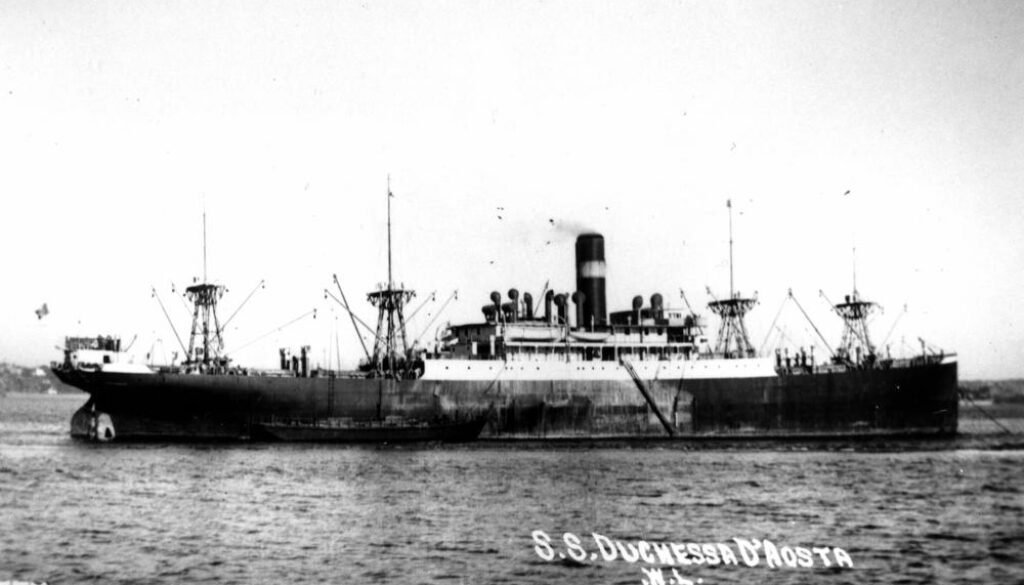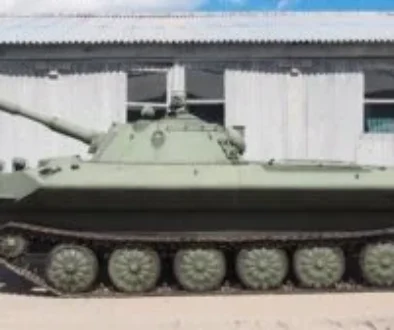Operation Postmaster, a bold and covert British commando operation during World War II, exemplifies the ingenuity and daring of Allied special forces. Conducted in January 1942 by the Special Operations Executive (SOE), this raid targeted Axis shipping in the neutral port of Santa Isabel on the Spanish-controlled island of Fernando Po (now Bioko in Equatorial Guinea). We delve into the planning, execution, and significance of Operation Postmaster, highlighting the strategic brilliance and audacity of those involved.
Background and Strategic Importance
By late 1941, the Allied forces were searching for ways to disrupt Axis operations across various theatres of the war. The SOE, established by Prime Minister Winston Churchill to “set Europe ablaze,” specialized in sabotage and unconventional warfare. Their mission was to strike at the Axis powers through guerrilla tactics, espionage, and sabotage, often behind enemy lines.
Santa Isabel was a strategic location for Axis shipping. Several Italian and German ships sought refuge in the port to avoid capture or destruction by the Allied navies. These vessels, including the Italian merchant ship Duchessa d’Aosta and the German ships Likomba and Bibundi, represented potential threats as they could be used to resupply Axis submarines and surface raiders operating in the Atlantic. Disabling these ships would hinder Axis maritime logistics and deny them safe havens.

Major Gustavus March-Phillipps

Captain Graham Hayes
Planning the Raid
The operation was conceived by Major Gustavus March-Phillipps, the leader of the Small Scale Raiding Force (SSRF), a unit within the SOE. The plan was audacious: infiltrate the neutral port, seize the Axis ships, and tow them to Allied-controlled Nigeria. This required meticulous planning, precise execution, and above all, maintaining the element of surprise to avoid diplomatic fallout with Spain, a neutral country during the war.
Key figures in the planning included Major March-Phillipps, Captain Graham Hayes, and Lieutenant Geoffrey Appleyard. They assembled a team of commandos from the SSRF and sailors from the Royal Navy, ensuring that each member was briefed thoroughly and prepared for the complex mission.

Lieutenant Geoffrey Appleyard.
The team utilized two tugs, Nuneaton and Nigerian, camouflaged to blend into the local environment. These tugs would serve as the primary vessels for the raid, equipped with the necessary tools for boarding and securing the target ships. The operation also required coordination with the Royal Navy, which provided support and backup if things went awry.
Detailed Planning and Preparation
The meticulous planning phase of Operation Postmaster was critical to its success. Intelligence gathering played a key role, with agents providing detailed reports on the layout of the port, the positioning of the Axis ships, and the routines of the crews.
This information was crucial for formulating a plan that maximized the chances of success while minimizing risks.
Training for the raid was intense. The commandos and sailors rehearsed the boarding techniques, practiced handling explosives, and familiarized themselves with the layout of the target ships. The training was conducted under conditions that simulated the actual raid environment as closely as possible, including night operations and silent approaches.
A crucial element of the preparation was the customization of the tugs. The Nuneaton and Nigerian were modified to carry the commandos and the equipment needed for the operation. They were also fitted with additional fuel tanks to ensure they could make the return trip to Nigeria without refuelling, which would be impossible once the raid commenced.

Execution of the Raid
On the night of January 14-15, 1942, the commandos set out under the cover of darkness. The approach to Santa Isabel was fraught with risk. The neutral status of the port meant any discovery could result in severe diplomatic repercussions, potentially damaging Allied relations with Spain.
Upon reaching the harbour, the commandos split into teams. One team, led by Captain Hayes, was tasked with boarding and securing the Duchessa d’Aosta. Another team, led by Lieutenant Appleyard, targeted the Likomba and Bibundi. They used grappling hooks and scaling ladders to silently board the ships, overcoming minimal resistance as the crew members were caught off guard.
The commandos’ training and preparation paid off. They swiftly overpowered the minimal guards, neutralized the crews without lethal force, and began the process of preparing the ships for towing. The efficiency of the operation was crucial to avoid detection and ensure a swift departure from the port.
Once on board, the commandos quickly overpowered the crews and began the process of preparing the ships for towing. They disabled the ships’ communications equipment to prevent any distress signals from being sent. The meticulous preparation paid off as the commandos successfully secured the ships and began towing them out of the harbour.
Challenges and Adaptations
Despite the meticulous planning, the operation was not without its challenges. The commandos encountered unforeseen obstacles, such as the difficulty in securing the tow lines to the ships and minor technical issues with the tugs. The tight timeline meant that any delay could jeopardize the entire mission.
One significant challenge was the potential for interference from the Spanish authorities. Although Spain was neutral, any discovery of the raid could lead to diplomatic complications.

The commandos had to ensure that the operation remained covert, which required strict discipline and adherence to the plan, but encountered unforeseen obstacles, such as the difficulty in securing the tow lines to the ships and minor technical issues with the tugs. The tight timeline meant that any delay could jeopardize the entire mission.
One significant challenge was the potential for interference from the Spanish authorities. Although Spain was neutral, any discovery of the raid could lead to diplomatic complications. The commandos had to ensure that the operation remained covert, which required strict discipline and adherence to the plan.
The commandos demonstrated remarkable adaptability in overcoming these challenges. They improvised solutions on the spot, using their training and resourcefulness to address issues as they arose. This ability to adapt under pressure was a testament to their professionalism and the effectiveness of their preparation.
Aftermath and Significance
The operation was a resounding success. The commandos managed to tow the ships to Lagos, Nigeria, without encountering significant resistance from Axis forces or interference from neutral observers. The capture of these ships deprived the Axis of valuable resources and demonstrated the effectiveness of the SOE and the SSRF in executing daring operations.
Operation Postmaster had several significant outcomes. Firstly, it showcased the capability of Allied special forces to carry out complex and high-risk missions, boosting morale and providing a template for future operations. The success also underscored the importance of unconventional warfare in the broader Allied strategy, validating the establishment of units like the SSRF and the SOE.
Secondly, the raid disrupted Axis maritime logistics in the Atlantic, hampering their ability to support U-boat operations and surface raiders. This contributed to the broader Allied effort to secure the Atlantic shipping lanes, crucial for maintaining the flow of supplies and reinforcements from the United States to Europe.
Lastly, Operation Postmaster had diplomatic repercussions. The careful execution ensured minimal fallout with Spain, maintaining its neutral stance. The operation demonstrated the Allies’ commitment to striking at Axis interests wherever they might be found, reinforcing the message that no place was safe from Allied reach.

Analysis of Tactical and Strategic Impact
Operation Postmaster was a tactical success, but its strategic impact went beyond the immediate outcomes. The raid highlighted the effectiveness of special operations in achieving specific, high-value targets that conventional forces might struggle to reach. The ability to strike deep within neutral territory and extract significant assets without direct confrontation with the neutral power was a remarkable feat of planning and execution.
The psychological impact on the Axis powers was also significant. The raid demonstrated that the Allies were capable of striking at Axis assets anywhere, disrupting their operations and forcing them to reconsider the security of their shipping and logistics networks. This unpredictability added a layer of complexity to Axis planning and resource allocation.
For the Allies, Operation Postmaster served as a proof of concept for future special operations. It validated the investment in training, equipping, and deploying small, highly skilled units capable of executing precision strikes. The lessons learned from the operation informed the development of similar missions, contributing to the overall effectiveness of Allied special operations throughout the war.
Legacy and Influence
The legacy of Operation Postmaster extends beyond its immediate successes. It stands as a testament to the courage, creativity, and effectiveness of Allied special forces during World War II. The operation exemplified the principles of unconventional warfare: surprise, precision, and adaptability.
In the years following World War II, the principles demonstrated during Operation Postmaster influenced the development of modern special operations forces. The emphasis on rigorous training, detailed planning, and the ability to adapt to dynamic situations became hallmarks of special forces units worldwide. The raid’s success also highlighted the value of intelligence and reconnaissance in planning and executing special operations.
Today, Operation Postmaster is studied as a classic example of special operations warfare. It serves as an inspiration for military planners and special forces operatives, illustrating the potential of small, well-trained units to achieve significant strategic objectives. The operation’s success continues to inform contemporary military strategy, underscoring the enduring relevance of unconventional warfare in addressing modern security challenges.
Conclusion
Operation Postmaster stands as a remarkable chapter in the history of World War II, showcasing the daring and ingenuity of Allied special forces. The successful raid on Axis shipping in the neutral port of Santa Isabel not only disrupted enemy logistics but also demonstrated the potential of special operations to achieve strategic objectives through unconventional means. Major Gustavus March-Phillipps and his team of commandos exemplified the daring spirit that would become synonymous with the SOE and other special forces units. Their legacy continues to inspire and inform military operations to this day, highlighting the timeless value of audacity and ingenuity in the face of formidable challenges.
Through Operation Postmaster, the Allied forces demonstrated their commitment to disrupting Axis operations wherever they might be found, reinforcing the strategic importance of special operations in achieving broader military objectives. The raid remains a benchmark for future generations, exemplifying the principles of precision, adaptability, and courage that define successful special operations.



